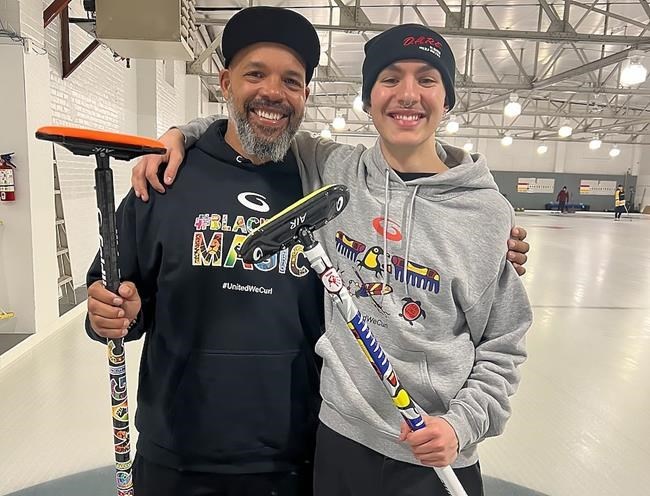When Richard Norman was invited to a celebrity fundraising curling bonspiel at Toronto's Cricket Club several years ago, he went scratching his head.
"I'm like 'what's curling? Curling's not for Black people. Why am I coming to this?' I ended up having a transformative time at this event," Norman said.
"I thought this game was so fun. The social aspect is great. Why aren't there more Black and brown people in the sport? That brought me full circle to 'all right, maybe I'll entertain this in my PhD.'"
His 2020 dissertation for his University of Waterloo doctorate focusing on the intersection of race, colonialism and sport in curling has led him to a job with Curling Canada.
His title of Director of Community Futures and Innovations sounds weighty, but Norman says his mandate is straightforward.
"When I boil it down, it's really to ask this question about what comes next for curling?" Norman explained.
"This is where we get into communities that haven't necessarily been well-represented in curling. How do we actually do a better job of inviting them into the sport?
"On the surface, curlers are fully aware it's a fairly white sport and they want to do their best to reach out and bring communities (in), but I think there's a lack of understanding about what the approach is we should take, how we should do that and how it looks like in different regions."
If a curling club's learn-to-curl session isn't well-attended, for example, Norman helps with the why and what can be done differently to connect with people who have never set foot in a curling club before.
Marketing a learn-to-curl session on social media isn't effective, if people aren't following the club's social-media accounts, he said.
"Clubs have such limited capacity. Realistically maybe a couple of paid positions. The GM works six to seven days a week and it's a volunteer board. Increasing outreach is really complicated, and it takes time," Norman said.
"'The game has no problem. You can bring in kids all the way to 80-year-olds and you have an ice surface, you can slide a bit, you can crash rocks together, that's fun. We don't have to sell that," he continued.
"It's all the other structures that we put in place, which make it sometimes difficult for people to see themselves and come in and feel like you really belong, so that's what we want to kind of get around."
Edmonton's Granite Club has launched a pilot project with Norman's Bridging Boundaries program.
A marketing company Visionnaire, which specializes in reaching diverse communities, does a lot of legwork for the club in determining what groups the clubs could reach out to, and how to best bring curling to them.
"What we've done to date is research what culturally diverse groups are in the general vicinity of the Granite, and we're working on seeing how we can basically get them curling, whether it be a one-off event, whether it be a league," said Granite general manager Mitchell Woytuck.
"Whether we need translators to help with language barriers, whether it's price, whatever we can do to bring a more diverse set of peoples into the sport of curling."
Woytuck says a few Zoom calls and emails are all that's been required of him so far.
"I would love to go chase business all day, but I'm in a position where I have to work a lot on the operation side of things," Woytuck said. "I'm already stretched thin during the season to say the least.
"The communication constraints, they're very much helping with that, and they're able to help with the manpower part of it."
Curling Canada interim chief executive officer Danny Lamoureux likes Norman's approach of tailoring strategies for different regions and communities because one size does not fit all.
"He's not going to build a tool kit that we're going to drop in a thousand curling clubs. That's not going to work," Lamoureux said. "So he's kind of taking on the challenge of creating programs that will meet the needs of everybody.
"It's going to take years, but he's already got some pilots set up. We're big fans of piloting stuff because what we found out is our curling clubs love to see what other clubs are doing rather than getting a box of information in the mail."
This report by The Canadian Press was first published Dec. 14, 2023.
Donna Spencer, The Canadian Press




